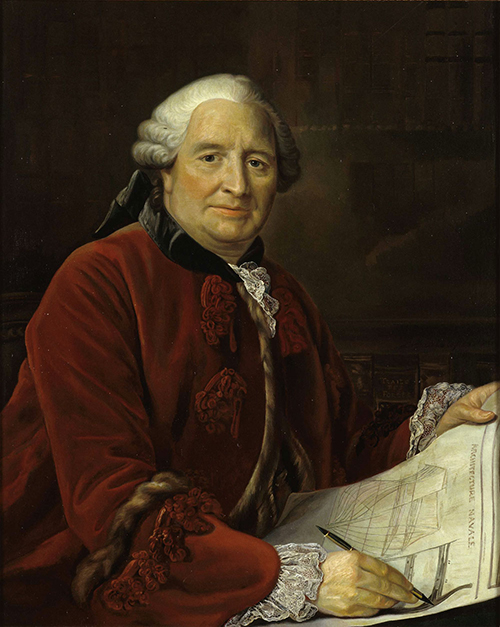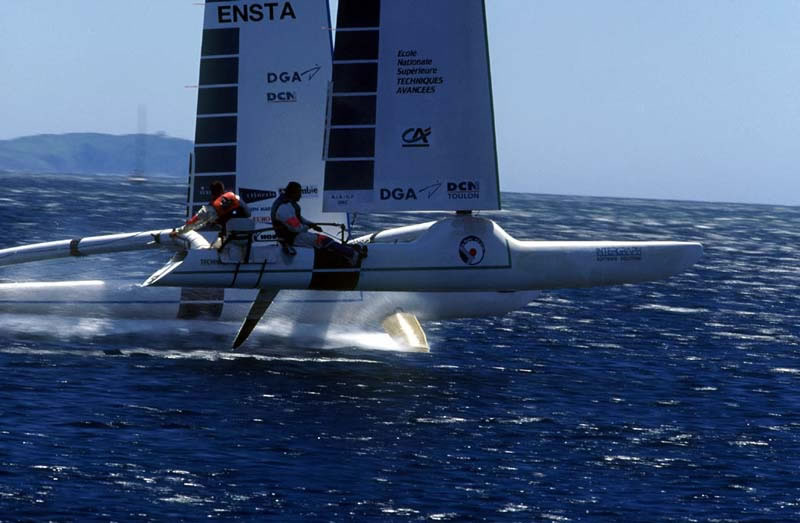ENSTA Paris is a multidisciplinary engineering school that offers world-class education courses. It is part of the Institut Polytechnique de Paris, a leading teaching and research institution in France and abroad which brings together five Schools or Grandes Ecoles.
Under the supervision of the Ministry of Armed Forces, ENSTA Paris delivers multidisciplinary training, which allows its graduates to work in numerous sectors of activity corresponding to its domains of excellence, such as automobile, rail or naval transport, energy, robotics, mathematical engineering and digital technology ; sectors and fields in line with the needs of large businesses.
The "École Nationale des Techniques avancées (National School of Advanced Techniques) Paris" is located in the south of Paris in Palaiseau, at the heart of a campus made up of numerous scientific establishments and institutions, in a pleasant setting with a multitude of green spaces.
Research is one of the School's major missions. Half of it is carried out by the School's teacher-researchers and the other half by researchers from CNRS, INRIA and the École Polytechnique working in the premises of ENSTA Paris. The School has six research units.
From maritime engineering to contemporary engineering challenges
The origin of the School dates back to the initiative of Henry-Louis Duhamel du Monceau, Inspector General of the Navy, who identified the need for master shipwrights with theoretical knowledge, particularly in mathematics and physics, required for a better understanding of their profession.
After having created a first school in Toulon, he transferred it to Paris in 1741, the date which marks the origin of our establishment. After experiencing a 7-year period of difficulty for budgetary reasons, in 1765 he managed to convince the Duke of Choiseul to reopen it. He would continue to lead it for the rest of his life.
Housed at the time in the Louvre Palace, the École des Ingénieurs-Constructeurs de Vaisseaux Royaux (School of Engineers-Builders of Royal Vessels) thus created would later become the École Nationale Supérieure du Génie Maritime (National Higher Education School of Maritime Engineering).
It merged in 1940 with the Ecole d'Application de l'Artillerie Navale (School of Application of Naval Artillery).
In 1970, the Directorate General of Armaments, merged the School with three other of its establishments (Schools of Application Ecole Polytechnique):
● L'École Nationale Supérieure des Poudres
● L'École Nationale Supérieure de l'Armement
● L'École des Ingénieurs Hydrographes de la Marine
Thus was established the École Nationale Supérieure de Techniques Avancées (ENSTA Paris), with the mission of training engineers to the challenges of major transformations in strategic sectors such as transport, energy and defence. The scientific skills of each of the founding schools are found in the wide range of disciplines practiced at ENSTA in terms of research, as well as in the general nature of its teaching and the variety of in-depth studies offered to students.
In December 2010, ENSTA Paris et ENSTA Bretagne (formerly known as Ensieta) created the ENSTA group to strengthen high-level training and research work.
October 2012, the school invests its new buildings, certified HQE (High Environmental Quality), on the plateau of Palaiseau next to Ecole Polytechnique.
At the end of 2018, Ecole Polytechnique, ENSTA Paris, ENSAE, Télécom Paris and Télécom SudParis joined forces to create a world-class science and technology institute. It will be called Institut Polytechnique de Paris. Now associated with HEC Paris, the institute is developing its reputation as well as that of its schools.
ENSTA Paris is now a public scientific, cultural and professional establishment, constituted as a grand établissement (EPSCP-GE), placed under the supervision of the French Ministry of Armed Forces.
The Techniques Avancées catamaran
The Techniques Avancées catamaran is part of the more recent history of the School.
Designed by the students of ENSTA Paris in the early 1990s with the help of the school's Laboratory of Mechanics, engineers from the DGA, in particular Mr Lefaudeux, as well as the DCN, this catamaran is equipped with 3 foils and propelled by rigid sails. From a speed of 15 knots, its hulls rise up out of the water, carried by the foils, and the boat "flies" above the choppy water.
On 24 June 1997, in Toulon harbour, it established the world sailing speed record for large boats (category D: sail area greater than 27.88 m2). Helmed by Gérard Navarin, with Christian Colombo as a teammate, it reached a speed of 42.1 knots, approved on a 500 m journey.


